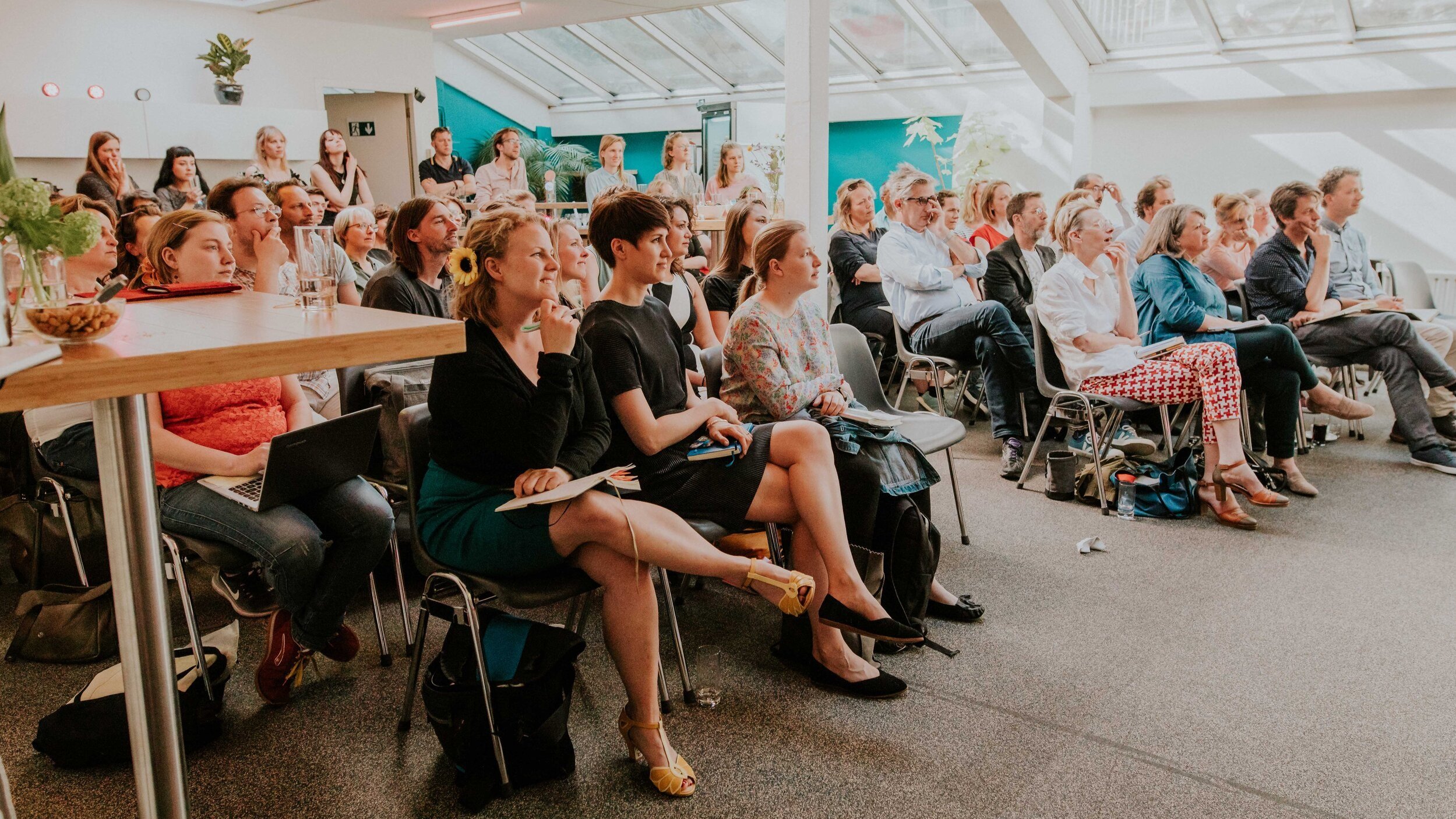Studio Louter Café
At Studio Louter Café we investigate museum-related topics and converse with experts in various areas from the museum world and beyond. Come learn and chat with us over drinks.

Looking across borders
Museums play a central role in society. So it's useful for professionals inside and outside the field to come together to discuss issues and dilemmas of relevance for museums and the wider world. After all, we’re wiser together than alone.
The first four Studio Louter Cafés took place as part of Amsterdam University of Applied Sciences’ RAAK-funded study ‘De Tentoonstellingsmaker van de 21e Eeuw’ (The 21st-Century Exhibition Maker). Participants found those informal afternoon discussions so inspiring, we decided to keep organising them independently after the research project ended.
“We only notice things that deviate from the norm”
dr. Stefan van der Stigchel, associate professor of experimental psychology, Utrecht University — 1 March 2018, Studio Louter Café 1
Valuable insights
In previous editions we exchanged ideas with a retail designer, a brand experience marketer, a screenwriter, a philosopher, and specialists from academia and the museum world.
To Digital or too Digital?
Using digital media effectively — SLC5, November 2019
Despite the myriad possibilities offered by digital technology, objects and stories are still a museum’s most important components, according to Dave Patten, head of new media at London’s Science Museum. So if you choose to use digital media, he told us, think carefully about how they can add value, and stop there.
Also joining us was the philosopher and writer Hans Schnitzler, who argued that humanity and technology are two sides of the same coin. We shape technology, but it also shapes us.
Mood Makers
Pushing buttons to evoke atmosphere — SLC4, December 2018
Crossmedia lecturer Harry van Vliet of Amsterdam University of Applied Sciences revealed how scholarly tools can help us to measure, analyse and influence an exhibition’s atmosphere. His method: a detailed questionnaire for museumgoers.
Arne Koefoed, a partner at the WINK creative agency, organises festivals and events. For visitors to undergo an experience, he explained, their minds need to be open. That means you have to put them in a receptive state.
Buying Before You Look
Seducing visitors with spatial design — SLC3, May 2018
According to Jeroen Luttikhuis, a creative partner at the design agency OPERA Amsterdam, the difference between a museum and a shop is the location of the till. At a museum you pay before you know what you're getting. Your expectations have yet to be fulfilled.
For Carlijn Kriekaard and John Maatman, founders of the creative studio Bearandbunny, a shop design is successful when meaning and functionality come together in a total experience that coincides with the brand's DNA.
The Art of Storytelling
Designing a narrative that touches visitors’ emotions — SLC2, April 2018
Studio Louter creative partner Barend Verheijen explained how a successful exhibition can be boiled down to a single guiding concept: “…one clear, coherent sentence that expresses a story’s irreducible meaning” – Robert McKee, Story Consultant
Robert Alberdingk Thijm, a screenwriter for Dutch TV series like All Stars and A’dam – E.V.A., introduced the phenomenon of mirror neurons, which allow us to better understand the emotions of other people, including those we see on screen.
Full Attention
Capturing visitors’ minds — SLC1, March 2018
According to Stefan van der Stigchel, an associate professor of experimental psychology at Utrecht University, attention is a spotlight that can only shine on one thing at a time. But we can move that spotlight – for example, by making use of expectation or surprise.
Peter Carpreau is a curator at the museum M Leuven. Although our brains process visual information better than, say, tactile or auditory input, he highlighted the value of multisensory exhibitions. Because attention is strongest when all the senses are working together.
